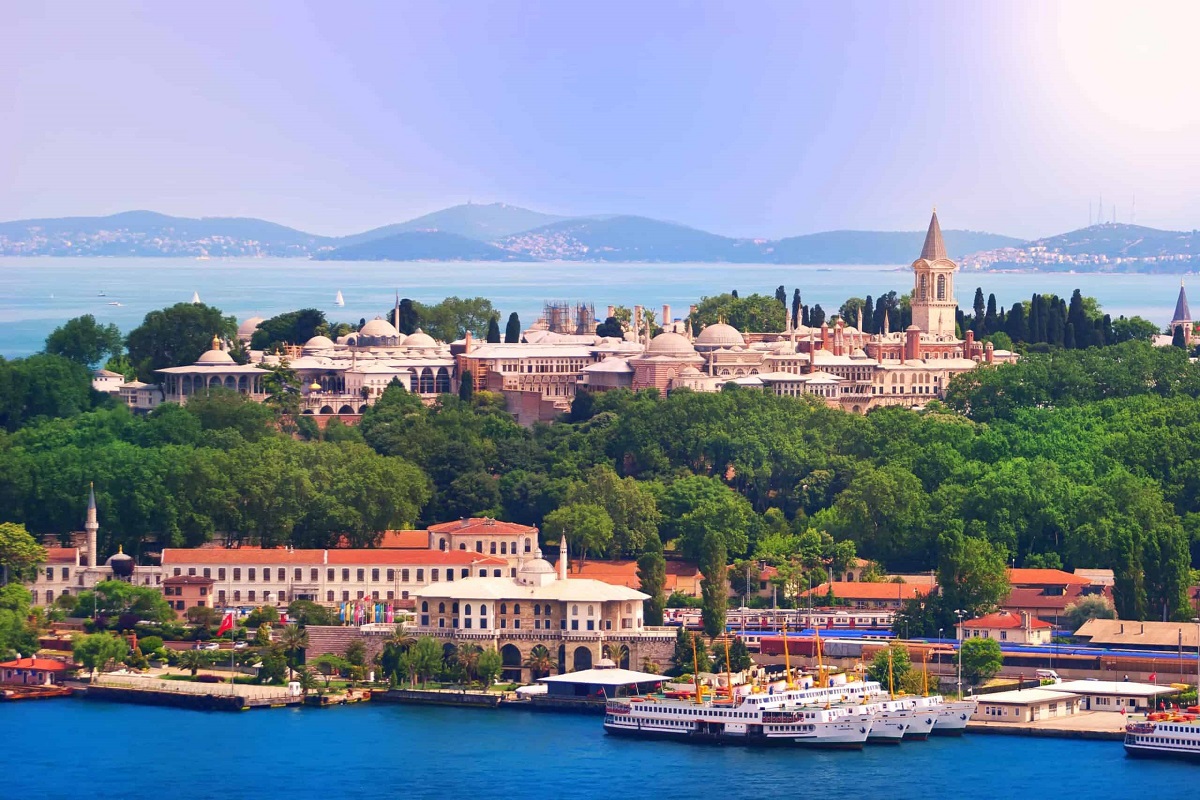

PAMUKKALE
Pamukkale Tours invite you to explore one of Turkey’s most stunning natural and historical destinations. Discover the breathtaking white travertine terraces, soak in the warm thermal pools, and walk through the ancient ruins of Hierapolis, including the grand theater and ancient Roman baths.
Book your Pamukkale Tours today and experience the beauty of Turkey’s natural wonder and ancient history all in one journey!
Experience Pamukkale: Choose the Tour that Matches Your Preferences
Discover the Best Pamukkale Tours
-
10 HoursPrivate Tour
Tour Highlights
Hierapolis Ancient City, Hierapolis Theatre, Necropolis Of Hierapolis, Pamukkale Nature Park, Pamukkale Cotton Castle Viewpoints
$274,00Rated 4.89 out of 5 based on 9 customer ratingsExplore the surreal white terraces of Pamukkale and the ancient ruins of Hierapolis. Discover mineral springs, Roman baths, and the famous Necropolis on this unforgettable day.
-
10 HoursPrivate Tour
Tour Highlights
Hierapolis Ancient City, Hierapolis Theatre, Necropolis Of Hierapolis, Pamukkale Cotton Castle Viewpoints, Aphrodisias Ancient City
$160,00Rated 4.85 out of 5 based on 13 customer ratingsExplore Aphrodisias, famed for its marble art and ancient ruins, and marvel at Pamukkale’s stunning white terraces and the Roman spa city of Hierapolis on this unforgettable journey
-
10 HoursPrivate Tour
Tour Highlights
Hierapolis Ancient City, Hierapolis Theatre, Necropolis Of Hierapolis, Pamukkale Nature Park, Pamukkale Cotton Castle Viewpoints
$274,00Rated 4.89 out of 5 based on 9 customer ratingsExplore the surreal white terraces of Pamukkale and the ancient ruins of Hierapolis. Discover mineral...
-
10 HoursPrivate Tour
Tour Highlights
Hierapolis Ancient City, Hierapolis Theatre, Necropolis Of Hierapolis, Pamukkale Cotton Castle Viewpoints, Aphrodisias Ancient City
$160,00Rated 4.85 out of 5 based on 13 customer ratingsExplore Aphrodisias, famed for its marble art and ancient ruins, and marvel at Pamukkale’s stunning...
Discover Turkey’s Most Iconic Destinations
Expand your journey and explore Turkey’s most remarkable regions. Walk through the historic streets of Istanbul, soar above the fairy chimneys of Cappadocia, and embrace the coastal charm and rich heritage of Izmir.
Start planning your next unforgettable experience today!
Pamukkale Tours
Discover Turkey’s Natural Wonder with Pamukkale Tours
Our Pamukkale tours take you to one of Turkey’s most iconic destinations, where natural beauty meets ancient history. Explore the striking white travertine terraces and the ruins of Hierapolis, all with expert guides and comfortable transportation.
Best Pamukkale Day Tours for Every Traveler
Pamukkale and Hierapolis Tours – A Journey Through Nature and History
Walk along the Pamukkale travertines and explore the Hierapolis Ancient City, where Roman baths, temples, and a grand amphitheater tell stories of the past.
Hierapolis Ancient City – Discover Roman Ruins in Pamukkale
Stroll through the ruins of Hierapolis, visiting its grand theater, necropolis, and well-preserved Roman baths.
Pamukkale Travertine Terraces – Turkey’s Most Famous Natural Wonder
Marvel at the cascading white terraces of Pamukkale, formed by natural thermal waters flowing over centuries.
Pamukkale Day Tours from Kusadasi – Easy & Comfortable Travel
Join a Pamukkale day tour from Kusadasi, ideal for cruise passengers and holidaymakers looking for a full-day trip to this stunning region.
Pamukkale Day Trips from Izmir – Convenient Tours from the City
Enjoy a Pamukkale day tour from Izmir, perfect for visitors wanting to combine ancient history and natural beauty in one day.
H2: Private and Small Group Pamukkale Tours for a Personalized Experience
Private Pamukkale Tours – Explore at Your Own Pace
Enjoy the flexibility of private Pamukkale tours, with your own guide and vehicle, allowing you to customize the itinerary and travel at your preferred pace.
Family-Friendly and Customizable Pamukkale Private Tours
Perfect for families or small groups, our private Pamukkale tours are designed to fit your interests, whether you want to focus on history, nature, or relaxation.
Small Group Pamukkale Day Tours – A Social and Affordable Experience
Our small group Pamukkale tours offer a friendly and social atmosphere, with expert guidance and seamless travel arrangements.
Extend Your Pamukkale Adventure with Nearby Attractions
Pamukkale and Laodicea Tour – Two Ancient Cities in One Day
Combine your visit to Pamukkale with a tour of Laodicea, an ancient city mentioned in the Bible and home to impressive ruins.
Pamukkale and Aphrodisias Tour – Ancient Beauty and Natural Wonders Combined
Add Aphrodisias, a beautifully preserved ancient city dedicated to the goddess Aphrodite, to your Pamukkale day tour for a deeper historical experience.
Why Choose Our Pamukkale Tours?
Professional Local Guides for the Best Pamukkale Experience
Our guided Pamukkale tours are led by licensed experts who share fascinating stories about the site’s history, geology, and significance.
Comfortable Transportation from Kusadasi, Izmir, and Denizli
Enjoy hassle-free travel with round-trip transfers from Kusadasi, Izmir, Denizli, and other nearby locations for all our Pamukkale day tours.
Flexible Tour Options for Solo Travelers, Couples, and Families
Whether you’re traveling solo, as a couple, or with family, we offer Pamukkale tours to suit every traveler type and interest.
Discover the Timeless Beauty of Aphrodisias and Laodicea Tours
Explore two of Turkey’s most remarkable archaeological sites with our Aphrodisias and Laodicea tours. Known for their stunning ancient ruins and historical significance, these ancient cities are perfect day trips from Pamukkale, Denizli, and Kusadasi, offering an unforgettable journey through the Roman and early Christian eras.
Explore Aphrodisias Ancient City – A Hidden Gem of Roman Art and Culture
Aphrodisias Tours from Pamukkale and Kusadasi – Discover the City of the Goddess of Love
Join our Aphrodisias tours from Pamukkale or Kusadasi, where you’ll explore beautifully preserved marble structures, including the Temple of Aphrodite and the grand Stadium.
Temple of Aphrodite – The Spiritual Heart of Aphrodisias
Walk through the remains of the Temple of Aphrodite, a sacred site dedicated to the goddess of love and beauty.
Aphrodisias Stadium – The Best-Preserved Stadium of the Ancient World
Marvel at the remarkably intact Aphrodisias Stadium, once hosting athletic competitions and public gatherings.
Aphrodisias Museum – See Masterpieces of Roman Sculpture
Visit the Aphrodisias Museum, housing an extraordinary collection of ancient marble sculptures and inscriptions.
Laodicea Ancient City Tours – Explore One of the Seven Churches of Revelation
Laodicea Tours from Pamukkale – A Biblical and Roman Legacy
Our Laodicea tours from Pamukkale reveal one of Turkey’s most important early Christian sites, mentioned in the Book of Revelation, featuring ancient streets, churches, and Roman temples.
The Laodicea Church – One of the Oldest Christian Churches in the World
Visit the ancient Laodicea Church, an important site in early Christian history and one of the first official Christian worship places in Asia Minor.
Laodicea Stadium, Theatres, and Temples – Roman Grandeur on Display
Explore the remains of the Roman stadium, theatres, and monumental temples that made Laodicea a wealthy and influential city.
Private and Guided Tours of Aphrodisias and Laodicea
Private Aphrodisias and Laodicea Tours – Personalized and Flexible Itineraries
Enjoy a private tour of Aphrodisias and Laodicea, where your expert guide tailors the itinerary to your interests, offering an in-depth historical experience and relaxed travel.
Small Group Aphrodisias and Laodicea Day Tours – Social and Enriching
Join our small group tours for a friendly and engaging journey through the ancient ruins, perfect for solo travelers, couples, or friends.
Guided Day Trips from Pamukkale, Denizli, and Kusadasi
Our Aphrodisias and Laodicea day tours are available from Pamukkale, Denizli, and Kusadasi, providing seamless round-trip transportation and expert guides.
Why Visit Aphrodisias and Laodicea on a Day Tour?
Explore UNESCO World Heritage Sites and Biblical History
Aphrodisias is a UNESCO World Heritage Site, renowned for its artistic heritage, while Laodicea is one of the Seven Churches of Revelation, making both sites essential stops for history and culture enthusiasts.
Enjoy Comfortable Travel and Expert Commentary
All our Aphrodisias and Laodicea tours include air-conditioned transportation, knowledgeable local guides, and carefully planned itineraries for a stress-free experience.
F.A.Q About Pamukkale Tours
What do Pamukkale tours include?
Our Pamukkale tours typically include round-trip transportation, entrance to the Pamukkale travertine terraces, a guided tour of Hierapolis Ancient City, and free time to explore or enjoy the thermal pools. Some tours also include Laodicea or Aphrodisias as optional stops.
Are your Pamukkale day tours guided?
Yes, all of our guided Pamukkale tours include a licensed local guide who shares the fascinating history of Hierapolis, explains the formation of the travertines, and helps you make the most of your visit.
Can I visit Pamukkale from Kusadasi in one day?
Yes, we offer Pamukkale day tours from Kusadasi, ideal for travelers staying in Kusadasi or arriving on a cruise. These full-day tours include comfortable transportation, a guided tour, and free time to walk on the travertines.
Do you offer Pamukkale tours from Izmir?
Yes, our Pamukkale tours from Izmir are perfect for those who want to explore Pamukkale and Hierapolis in a single day. The tour includes round-trip transportation from Izmir hotels or Izmir Airport.
How long are Pamukkale day tours?
Most Pamukkale day tours are full-day trips, lasting between 8 and 10 hours, depending on your starting location. The tour includes travel time, guided sightseeing, and free time at the travertines.
Are the thermal pools at Pamukkale open during the tours?
Yes, the Pamukkale thermal terraces and Cleopatra’s Pool are open year-round, weather permitting. During your Pamukkale tour, you’ll have free time to enjoy these thermal waters.
Do your Pamukkale tours include entrance fees?
Most of our Pamukkale tours include entrance fees for Pamukkale and Hierapolis. Some optional activities like swimming in Cleopatra’s Pool may have an extra charge.
Are Pamukkale tours suitable for children and seniors?
Yes, Pamukkale tours are family-friendly and suitable for seniors. The walking paths are safe, and you can explore the site at your own pace. Comfortable shoes are recommended due to uneven terrain.
What should I bring on a Pamukkale day tour?
Bring comfortable walking shoes, a swimsuit and towel if you plan to swim in Cleopatra’s Pool, sun protection (hat, sunglasses, sunscreen), and a refillable water bottle.
Can I book a private Pamukkale tour?
Yes, we offer private Pamukkale tours, allowing you to enjoy a personalized itinerary, flexible timing, and a dedicated guide.









